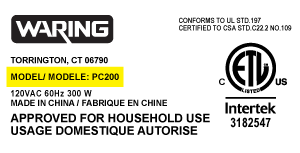WBB24750IT (01) Bosch Washer - Overview
Sections of the WBB24750IT
[Viewing 1 of 1]Keep searches simple, eg. "belt" or "pump".

Washer Door Hinge
PartSelect #: PS8731238
Manufacturer #: 00651004
The hinge is mounted on the front of the washer, and the door is installed onto the hinge. When the hinge on a washing machine is broken or bent the door may not swing properly, and it may not close. ...
$38.23
On Order

Bellow Assembly
PartSelect #: PS8732873
Manufacturer #: 00667489
This is a bellow assembly, also known as a door boot gasket kit, and it is designed for use with front load washers. This gasket acts as the main seal between the door of the washing machine and the w...
$82.85
In Stock

00 Shipping Bolt With Spacer
PartSelect #: PS8697774
Manufacturer #: 00175724
Front-loading washing machines use a suspension system to support the tub during the wash cycle. This suspension system is only designed to handle a certain amount of movement, so when you are transpo...
$18.05
In Stock

Shock Absorber
PartSelect #: PS8729758
Manufacturer #: 00642112
Shock absorbers keep the washer from vigorous shaking during it's cycles. They are sold individually.
$64.04
In Stock

Washer Drive Belt
PartSelect #: PS8722578
Manufacturer #: 00491680
This drive belt is for washers. Drive belt connects the drive motor to the drive system in the washer to spin the basket.
No Longer Available
Questions And Answers for WBB24750IT
Be the first to ask our experts a question about this model!
✖
Ask a Question
Ask our experts a question on this model and we'll respond as soon as we can.
Sorry, we couldn't find a match for "".
Here's a guide for finding your model number.
Something went wrong. Please try again later.
Your Question Has Been Submitted!
Our experts will send you an email as soon as your question has been answered.
Common Symptoms of the WBB24750IT
[Viewing 2 of 2]Keep searches simple. Use keywords, e.g. "leaking", "pump", "broken" or "fit".
Hinge bracket snapped off
Removed washing machine door. Then removed old hinge. Replaced with the new hinge. Replaced door. SPECIAL NOTE: Do not lose white plastic rings that cover hinge nipples on washer. The replacement part does not come with these 4 pieces.
Parts Used:
-
James from ALEXANDRIA, VA
-
Difficulty Level:Easy
-
Total Repair Time:15 - 30 mins
-
Tools:Screw drivers
15 of 20 people
found this instruction helpful.
Was this instruction helpful to you?
Thank you for voting!
The sleeves on this model washer are two different sizes see below
The thickness of the sleeves are 3.0 mm thick on the base of the sleeve. However the sleeve on the bottom of both the upper and lower hinges of this model washer are different sizes. The base of the sleeve on the top of each hinge post is 3.0 mm but the sleeve on the bottom post of each hinge is only 1.2 mm thick. The bracket on the d
... Read more
oor that holds all 4 screws to attach the door to the washer will not fit unless you reuse the old sleeve from the lower posts or reduce the thickness of the disc on the lower post to 1.2 mm. I spent hours trying to get the door back on and finally saw why I couldn't get the screws back in because the bracket could not go in place and sit flush the the washer.
Read less
Parts Used:
-
David from ENTERPRISE, AL
-
Difficulty Level:Very Easy
-
Total Repair Time:15 - 30 mins
-
Tools:Screw drivers
5 of 5 people
found this instruction helpful.
Was this instruction helpful to you?
Thank you for voting!
Old bellows was torn and needed to be replaced as the washing machine leaked.
This was my first time performing repairs on this machine.
I work in the engineering field and consider myself as having at least some mechanical aptitude.
The included instructions contained references to the disassembly of the reservoirs. This did not apply to my washer.
I was able to find a youtube video which was not si ... Read more gnificantly helpful.
Be prepared to keep track of parts removed and hardware.
Disassembly requires disassembly and removal of washer door.
Further disassembly was required to adequately access the part to be replaced. This includes removal of two large weights which improved access.
I removed the damaged bellows. The two spring-loaded clamps are way easier to remove than to install.
I gently set the new part in place to ensure I had the right part which seems to be easily damaged.
Securing the inner spring-loaded clamp was difficult as the new bellows needs to be installed in a specific orientation (it needs to be "keyed") and is quite floppy and pops out of position easily.
I'd recommend an additional pair of hands or two. Careful usage of multiple "C" clamps may be helpful, as well.
Use caution as to not pinch fingers or trap tools.
The spring of the spring-loaded clamp is quite strong. I used two pairs of locking pliers to grab the eyelets at each end of the spring.
The more you can extend the spring for 10+ seconds - without breaking it - the better.
It will likely take multiple attempts to apply the spring-loaded clamp when the bellows is in the correct position.
Make extra sure the bellows is fully seated, in the correct alignment and that the inner spring-loaded clamp is in the correct position.
Partially reassemble the washer to the point where the large front plate is installed.
Reassembly and attachment of the door is optional at this point It is it's own bundle of joy to reassemble and adjust. I saved it for last.
Securing the outer spring-loaded clamp was difficult as the achieving proper seal seating while installing the outer spring-loaded clamp was difficult. It is at least as difficult as installing the innerspring-loaded clamp as it seemed to be more likely that the seals of the bellows would pop out of place while working with it.
Again, make extra sure the bellows is fully seated, in the correct alignment and that the outer spring-loaded clamp is in the correct position.
After assembly and attachment of the door it was misaligned (the latching bar of the door collided with the latching mechanism in the large front plate). It required further disassembly and reassembly of the door to achieve proper alignment.
I ran a load of wash and no leaking.
I work in the engineering field and consider myself as having at least some mechanical aptitude.
The included instructions contained references to the disassembly of the reservoirs. This did not apply to my washer.
I was able to find a youtube video which was not si ... Read more gnificantly helpful.
Be prepared to keep track of parts removed and hardware.
Disassembly requires disassembly and removal of washer door.
Further disassembly was required to adequately access the part to be replaced. This includes removal of two large weights which improved access.
I removed the damaged bellows. The two spring-loaded clamps are way easier to remove than to install.
I gently set the new part in place to ensure I had the right part which seems to be easily damaged.
Securing the inner spring-loaded clamp was difficult as the new bellows needs to be installed in a specific orientation (it needs to be "keyed") and is quite floppy and pops out of position easily.
I'd recommend an additional pair of hands or two. Careful usage of multiple "C" clamps may be helpful, as well.
Use caution as to not pinch fingers or trap tools.
The spring of the spring-loaded clamp is quite strong. I used two pairs of locking pliers to grab the eyelets at each end of the spring.
The more you can extend the spring for 10+ seconds - without breaking it - the better.
It will likely take multiple attempts to apply the spring-loaded clamp when the bellows is in the correct position.
Make extra sure the bellows is fully seated, in the correct alignment and that the inner spring-loaded clamp is in the correct position.
Partially reassemble the washer to the point where the large front plate is installed.
Reassembly and attachment of the door is optional at this point It is it's own bundle of joy to reassemble and adjust. I saved it for last.
Securing the outer spring-loaded clamp was difficult as the achieving proper seal seating while installing the outer spring-loaded clamp was difficult. It is at least as difficult as installing the innerspring-loaded clamp as it seemed to be more likely that the seals of the bellows would pop out of place while working with it.
Again, make extra sure the bellows is fully seated, in the correct alignment and that the outer spring-loaded clamp is in the correct position.
After assembly and attachment of the door it was misaligned (the latching bar of the door collided with the latching mechanism in the large front plate). It required further disassembly and reassembly of the door to achieve proper alignment.
I ran a load of wash and no leaking.
Read less
Parts Used:
-
Melvin from ANTELOPE, CA
-
Difficulty Level:Difficult
-
Total Repair Time:More than 2 hours
-
Tools:Pliers, Screw drivers
4 of 4 people
found this instruction helpful.
Was this instruction helpful to you?
Thank you for voting!



































